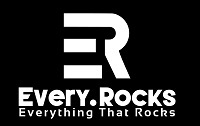Beyond the Clinic: How Mobile Diagnostic Tools Are Enhancing Telemedicine
The healthcare landscape is undergoing a significant transformation, driven by the integration of mobile diagnostic tools and telemedicine. These advancements are breaking down traditional barriers to healthcare access, enabling patients to receive timely and accurate medical care regardless of their location. By leveraging cutting-edge technology, mobile diagnostic tools are enhancing telemedicine, making healthcare more accessible, efficient, and patient-centric.
The Evolution of Telemedicine
Telemedicine has evolved from simple video consultations to a comprehensive healthcare delivery model that includes remote diagnostics, monitoring, and treatment. This evolution is largely due to advancements in telemedicine equipment, which now includes high-definition video equipment, electronic health record (EHR) management systems, and sophisticated diagnostic tools. These technologies enable healthcare providers to perform thorough medical examinations and monitor patients’ health status remotely, simulating the experience of a traditional face-to-face consultation.
The Role of Mobile Diagnostic Tools
Mobile diagnostic tools are at the forefront of this transformation. These portable devices, such as mobile X-ray machines, ultrasound devices, and point-of-care testing kits, allow healthcare providers to conduct essential diagnostic tests outside traditional medical settings. For instance, the AG Mobile X-Ray offers advanced imaging capabilities and wireless connectivity, enabling real-time transmission of imaging data to healthcare professionals for immediate analysis and decision-making.
Enhancing Accessibility and Timeliness
One of the most significant benefits of mobile diagnostic tools is their ability to enhance healthcare accessibility and timeliness. Patients in remote or underserved areas, who previously faced significant barriers to accessing medical services, can now receive high-quality diagnostic care at their doorstep. This is particularly crucial for early diagnosis and prompt medical intervention, which can significantly improve patient outcomes. Companies like Beyond Mobile Health are leading the way by providing on-site medical testing and compliance consulting, ensuring that even large groups, such as corporate employees or college students, have access to necessary diagnostic services.
Integration with Telemedicine
The integration of mobile diagnostic tools with telemedicine platforms is creating a seamless healthcare experience for patients and providers alike. Telemedicine software platforms offer secure video conferencing, EHR management, and appointment scheduling, which, when combined with mobile diagnostic capabilities, provide a comprehensive telehealth solution. This integration allows for real-time data sharing and collaboration between healthcare providers, enhancing the quality of care delivered remotely.
TridentCare: A Leader in Mobile Diagnostics
TridentCare is a prominent provider of mobile diagnostic services, offering a wide range of imaging and laboratory services directly to patients in their homes, skilled nursing facilities, and other non-traditional settings. TridentCare’s commitment to delivering high-quality, convenient, and timely diagnostic services aligns with the broader trend of mobile diagnostics revolutionizing healthcare. By leveraging advanced technology and a patient-centric approach, TridentCare ensures that essential diagnostic services are accessible to those who need them most, regardless of their location.
Future Trends in Telemedicine and Mobile Diagnostics
Looking ahead, several emerging trends are set to further enhance the capabilities of telemedicine and mobile diagnostics. The integration of artificial intelligence (AI) into telemedicine equipment is one such trend. AI algorithms can analyze large amounts of health data to identify patterns, predict health outcomes, and provide personalized care. Additionally, the proliferation of Internet of Things (IoT) devices, such as wearable health monitors, will enable continuous health monitoring and proactive health management.
Conclusion
The integration of mobile diagnostic tools with telemedicine is revolutionizing healthcare delivery, making it more accessible, efficient, and patient-centric. By breaking down traditional barriers to healthcare access, these advancements are ensuring that patients receive timely and accurate medical care, regardless of their location. As technology continues to evolve, the future of telemedicine and mobile diagnostics holds exciting potential for enhancing patient care and outcomes, bringing us one step closer to a more inclusive and effective healthcare system.
